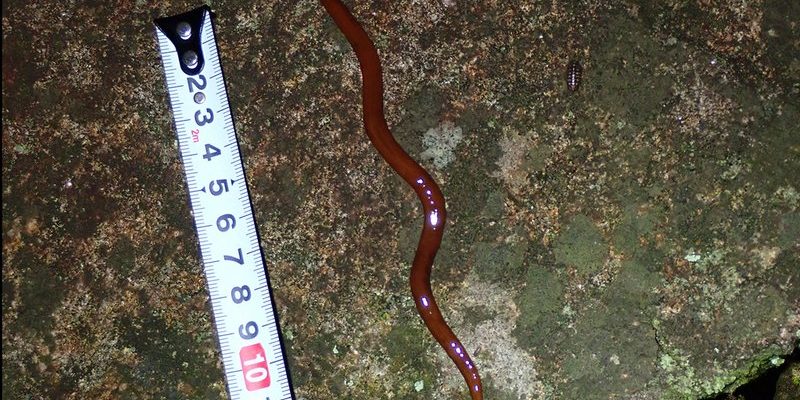
As we explore these intriguing creatures, we’ll dive into their **seasonal life cycle patterns**, which are quite remarkable. Much like how we see changes in nature with the shifting seasons, hammerhead worms go through significant transformations throughout the year. Let’s take a closer look at how these adaptations play a pivotal role in their survival and reproduction.
Understanding Hammerhead Worms
First things first, let’s get to know what exactly hammerhead worms are. These creatures are usually found in warm, moist environments, making them common sights in gardens or tropical regions. They thrive in soil, leaf litter, and even on damp surfaces. Their unique morphology not only helps them navigate through their habitat but also allows them to hunt down prey, primarily small invertebrates like earthworms and other worms.
What’s truly fascinating is their ability to regenerate. If they lose a part of their body, they can often regrow it! This feature is not just a neat trick; it’s an essential part of how they cope with their environment. Think of it like a superhero power—they can bounce back from injuries that would be serious for other species.
The Life Cycle of Hammerhead Worms
The life cycle of hammerhead worms can be broken down into several stages: **egg, juvenile, and adult.** Each stage is influenced by seasonal changes, affecting their behavior and survival strategies.
1. **Egg Stage:** The cycle begins when hammerhead worms lay eggs, often in clusters. These eggs are usually deposited in moist soil or leaf litter. The timing of this process depends heavily on seasonal conditions. For example, during warmer months, you’ll find more eggs being laid as conditions are optimal for survival.
2. **Juvenile Stage:** Once hatched, the young hammerhead worms go through a juvenile stage where they grow and develop. This phase is critical, as they are more vulnerable to environmental stressors. They rely on moisture and food availability, which can fluctuate with changing seasons.
3. **Adult Stage:** As they mature, hammerhead worms reach their adult size and become efficient predators. This stage also includes the reproductive phase, where adults mate and lay eggs to continue the cycle. Here’s the thing—if the conditions shift due to changing seasons, it can significantly impact their reproductive success.
Seasonal Changes and Their Impact
Seasonal shifts have a huge impact on hammerhead worms. Depending on where they live, these changes can dictate everything from their feeding habits to their reproductive cycles.
In warmer months, hammerhead worms are pretty active. You might spot them slithering about after a rainstorm, soaking up the moisture. They are more likely to hunt for food and engage in mating during this time. The increased warmth means more available prey, which is crucial for their survival.
As the temperature drops during fall and winter, these worms face challenges. Many species of hammerhead worms slow down significantly or even enter a sort of hibernation. They dig deeper into the soil where it’s warmer and more stable. During this time, they use less energy, which is essential for survival until the spring returns.
Feeding Habits Throughout the Seasons
You might be wondering what these worms eat and how their diets change with the seasons. Hammerhead worms primarily feed on other worms and small invertebrates. They have a predatory nature, making them important players in their ecosystem.
In spring and summer, their food sources are plentiful because of a surge in worm populations. This is when they thrive, actively hunting and consuming prey to build up energy reserves. As they prepare for the less favorable conditions of late fall and winter, they tend to eat more to ensure they have enough energy to get through the colder months.
During fall and winter, their feeding habits change. With fewer active prey around, they may consume less frequently. They rely more on the energy saved from the warmer months. This strategy allows them to survive until spring, when the cycle begins anew.
Reproductive Patterns and Seasonal Influences
Reproduction in hammerhead worms is highly influenced by seasonal cycles. During warmer months, when the environmental conditions are optimal, adults engage in mating. This often occurs after heavy rainfall, which provides the moist conditions that facilitate their activity.
After mating, females lay clusters of eggs in the soil. Timing is crucial here; laying eggs too late in the season can jeopardize the survival of the hatchlings, as cooler temperatures may impede their development. Thus, the ability to predict seasonal changes can determine the success of future generations.
During colder months, adult worms may cease reproductive activities, focusing instead on conserving energy and surviving. This pause in reproduction emphasizes the importance of seasonal rhythms in nature—punctuating the cycle of life for hammerhead worms.
Conservation and Challenges Facing Hammerhead Worms
While hammerhead worms are fascinating, they also face several challenges that can affect their life cycles. Habitat destruction, climate change, and pollution are significant threats. With changing weather patterns and more extreme conditions, their ability to survive, reproduce, and find food becomes compromised.
Conservation efforts are critical in maintaining their populations. Maintaining healthy ecosystems ensures that hammerhead worms can thrive. Community awareness and involvement can play a vital role in preserving their habitats, promoting biodiversity, and ultimately supporting these unique creatures.
Wrapping Up the Journey of Hammerhead Worms
So, there you have it! Hammerhead worms are far more than just peculiar little creatures; they are intricate parts of their ecosystems, adapting to seasonal changes and demonstrating resilience. With every lay of eggs and each hunt for food, they showcase the wonders of nature’s cycles.
By understanding their life cycle patterns, you not only appreciate their role in the environment but also contribute to helping protect their populations for the future. Whether you’re a curious gardener or a nature enthusiast, taking the time to learn about these amazing beings can deepen your connection to the natural world. Let’s keep our environments healthy for all creatures, including those enigmatic hammerhead worms!

